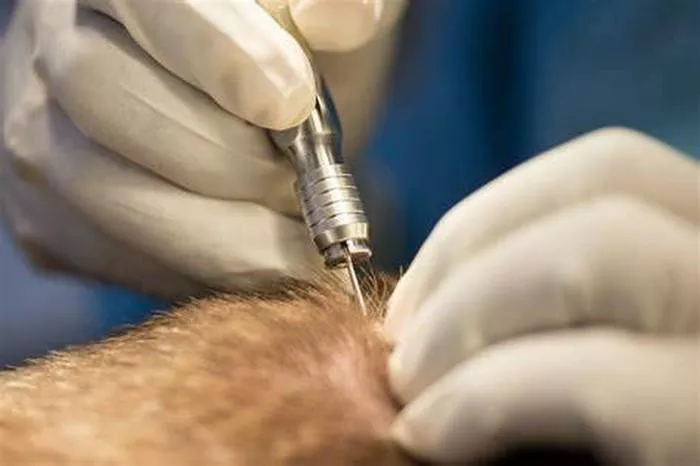Hair transplants have become a popular solution for individuals dealing with hair loss. They offer a chance to restore natural-looking hair, but they require careful post-operative care to ensure optimal results. One of the common questions patients have is about when they can safely cut their hair after the procedure. This article will provide a comprehensive guide on the appropriate timing for cutting your hair after a hair transplant, factors that influence this decision, and best practices for ensuring the best outcome.
Understanding Hair Transplant Procedures
To appreciate when you can cut your hair post-transplant, it’s important to understand the hair transplant process. There are two primary methods:
Follicular Unit Extraction (FUE): Individual hair follicles are harvested from the donor area and transplanted to the recipient area. This technique leaves minimal scarring and often has a faster recovery time.
Follicular Unit Transplantation (FUT): A strip of scalp is removed from the donor area, and hair follicles are extracted from this strip before being implanted in the recipient area. This method can result in a linear scar but often provides a higher yield of hair follicles.
Initial Post-Transplant Care
Immediately following a hair transplant, the scalp requires special care. The first few weeks are crucial for healing and ensuring the success of the transplant. Here’s what you need to know:
Avoid Touching the Scalp: After the procedure, avoid touching or scratching your scalp to prevent dislodging the newly implanted hair follicles.
Follow Post-Operative Instructions: Your surgeon will provide specific instructions regarding washing, medication, and avoiding certain activities. Adhere to these guidelines to promote healing.
Protect Your Scalp: Wear a loose hat or bandage as recommended to protect the transplanted area from external elements.
When to Resume Normal Hair Care
After the initial healing period, you can gradually resume normal hair care practices, including cutting your hair. Here’s a general timeline:
First Month: During the first month, avoid cutting your hair. The transplanted follicles are still in the early stages of establishing themselves and may be fragile.
One to Two Months: By the end of the second month, the majority of the transplanted hair follicles will have settled. You can consider trimming your hair, but it’s advisable to use scissors instead of clippers to avoid any potential damage.
Three to Six Months: By this time, the transplanted hair should be growing steadily. You can start to cut your hair more regularly. Ensure that any haircuts are done gently and avoid using harsh chemicals or heat treatments.
Six to Twelve Months: Most patients experience significant hair growth and can maintain their usual hair care routines, including regular haircuts, during this period.
Twelve Months and Beyond: At this stage, your hair should be well-established. You can cut and style your hair as desired, but continue to avoid any extreme hairstyles or treatments that could stress your hair.
Factors Affecting When You Can Cut Your Hair
Several factors can influence the appropriate time to cut your hair after a transplant:
Hair Growth Rate: Individual hair growth rates can vary. Some people may experience faster growth and can resume haircuts sooner than others.
Type of Hair Transplant: The method used (FUE or FUT) can affect healing time and when it’s safe to cut your hair.
Scalp Condition: The condition of your scalp and how well it has healed will also play a role. If you experience any complications or excessive shedding, consult your surgeon before cutting your hair.
Surgeon’s Advice: Always follow the specific recommendations provided by your surgeon. They have a clear understanding of your unique case and can provide personalized advice.
Best Practices for Cutting Your Hair After a Transplant
To ensure that your hair continues to grow healthily after a transplant, consider the following best practices:
Use Gentle Tools: Opt for sharp, clean scissors rather than clippers or razors, which can be harsh on new hair.
Avoid Chemical Treatments: Wait until your hair has fully matured before applying any chemical treatments such as coloring or perming.
Regular Trims: Regular, gentle trims can help maintain the health of your hair and scalp.
Consult Your Surgeon: If in doubt, always consult your surgeon or a professional hair stylist experienced in post-transplant care.
See also: Does Donor Hair Grow Back After FUE: What You Need to Know
Conclusion
Cutting your hair after a hair transplant requires careful timing and consideration. By following the recommended guidelines and best practices, you can ensure that your hair transplant results in the best possible outcome. Always prioritize the health of your scalp and adhere to your surgeon’s advice to promote healthy hair growth and maintain the success of your hair transplant.
If you have any concerns or questions about cutting your hair post-transplant, don’t hesitate to reach out to your healthcare provider or a professional hairstylist who specializes in post-transplant care.


